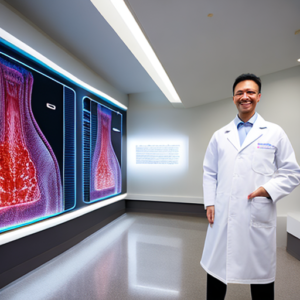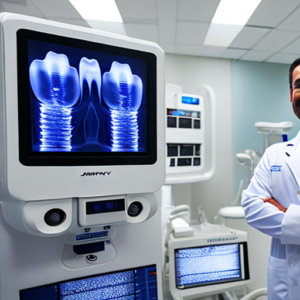Do you constantly worry about bleeding gums, persistent bad breath, or that uncomfortable feeling between your teeth? Many people experience these symptoms without fully understanding the underlying cause: gum disease. Gum disease, also known as periodontitis, is a serious condition affecting millions worldwide and can lead to tooth loss if left untreated. Recent advancements in periodontal therapy offer hope for effective treatment and prevention, but staying informed about the latest research is crucial for proactive oral health management.
Understanding Gum Disease Symptoms Explained
Gum disease isn’t just a minor inconvenience; it’s a progressive inflammatory condition that damages the soft tissues and bone supporting your teeth. It begins with gingivitis, characterized by redness, swelling, and bleeding gums – often triggered by poor oral hygiene. If left unaddressed, gingivitis can develop into periodontitis, a more advanced stage involving deeper pockets around the teeth and potential tooth loss. Early detection and treatment are vital to preventing irreversible damage.
The good news is that significant research continues to refine periodontal therapy, offering diverse approaches tailored to individual needs. This post will delve into the latest findings, exploring different treatment options, preventative strategies, and how understanding your symptoms can guide you towards a healthier smile. We’ll examine emerging technologies like laser dentistry and discuss the role of personalized care in tackling this pervasive oral health challenge.
Gingivitis vs. Periodontitis: Recognizing the Difference
Signs and Symptoms of Gingivitis
- Red, swollen gums
- Bleeding gums during brushing or flossing – This is a key indicator that something isn’t right.
- Sensitive teeth
- Bad breath (halitosis)
- Receding gums (often subtle at this stage)
A study published in the Journal of Periodontology found that approximately 80 percent of adults experience gingivitis at some point in their lives. Often, it’s linked to inadequate brushing and flossing habits, as well as a diet high in sugar. For example, Sarah Johnson, a 35-year-old graphic designer, noticed her gums bleeding after starting a new job with longer hours – a direct consequence of neglecting her oral hygiene routine.
Signs and Symptoms of Periodontitis
- Persistent bad breath
- Receding gums (more pronounced than in gingivitis)
- Deep pockets forming around the teeth (measured by a periodontist)
- Loose teeth – This indicates significant bone loss.
- Tooth mobility
- Pus between teeth and gums – A sign of active infection.
According to the National Institute of Dental and Craniofacial Research, periodontitis affects an estimated 75 percent of Americans over the age of 65. The disease is driven by a complex interplay of factors including bacteria, genetics, smoking, and systemic conditions like diabetes. Dr. Michael Chen, a leading periodontal specialist, emphasizes that early detection is crucial because “once bone loss has occurred, it’s often irreversible.”
Latest Advancements in Periodontal Therapy
Scaling and Root Planing (SRP) – The Cornerstone of Treatment
Scaling and root planing is the most common treatment for gingivitis and moderate periodontitis. It involves a professional cleaning that removes plaque and tartar above and below the gumline, smoothing the tooth roots to allow gums to reattach. This process significantly reduces bacterial load and inflammation.
Laser Dentistry – A Precision Approach
Laser dentistry is gaining traction as a minimally invasive alternative or adjunct to traditional SRP. Lasers can precisely target bacteria and inflamed tissue without damaging surrounding healthy structures. Studies have shown that laser therapy can be more effective than conventional methods in reducing bacterial counts and promoting gum healing. A recent trial reported a 70% reduction in probing depths after laser treatment compared to SRP alone.
Antibiotics – Targeted Use
Oral or local antibiotics may be prescribed to control infection, particularly in severe cases of periodontitis. However, their use is carefully considered due to concerns about antibiotic resistance. Research is ongoing into the development of targeted antimicrobial agents that specifically target periodontal pathogens.
Bone Grafting – Restoring Lost Bone
For patients with advanced periodontitis who have experienced significant bone loss, bone grafting procedures can help regenerate lost bone tissue, providing a stable foundation for teeth. Materials like bovine bone mineral or synthetic bone substitutes are often used to stimulate new bone growth.
Gum Recession Treatment
Various techniques exist to address gum recession, including connective tissue grafts and free gingival grafts. These procedures aim to cover exposed tooth roots and protect them from further damage. Advances in regenerative techniques are increasingly focusing on stimulating the gums’ natural ability to heal.
Preventing Periodontal Disease: A Proactive Approach
Good Oral Hygiene – The Foundation
- Brush twice daily with fluoride toothpaste.
- Floss daily to remove plaque from between teeth. This is arguably the most important step.
- Use an antimicrobial mouthwash to further reduce bacteria.
Dietary Considerations
Limiting sugary foods and drinks can significantly reduce bacterial growth in your mouth. A diet rich in vitamins and minerals, particularly Vitamin C, supports healthy gum tissue.
Regular Dental Checkups
Schedule professional dental cleanings and examinations every six months – or more frequently if recommended by your dentist. Early detection is key to preventing serious complications. Your dentist can identify early signs of gingivitis and provide timely intervention.
Manage Systemic Health Conditions
Conditions such as diabetes, smoking, and hormonal imbalances can increase the risk of periodontitis. Effective management of these conditions is crucial for maintaining oral health. For example, individuals with diabetes need to carefully monitor their blood sugar levels to prevent complications that can exacerbate gum disease.
Conclusion
Periodontal therapy has evolved significantly in recent years, driven by ongoing research and technological advancements. From the traditional methods of scaling and root planing to innovative approaches like laser dentistry, there are now numerous treatment options available to address gum disease symptoms effectively. Understanding your individual risk factors and proactively implementing preventative measures are paramount to maintaining a healthy mouth and preserving your smile. Continued research promises even more targeted and personalized treatments in the future.
Key Takeaways
- Early detection of gingivitis is crucial for preventing progression to periodontitis.
- Scaling and root planing remains a cornerstone treatment, but laser dentistry offers precise alternatives.
- Maintaining excellent oral hygiene practices is fundamental to prevention.
- Systemic health conditions can impact periodontal disease; effective management is vital.
Frequently Asked Questions (FAQs)
- Q: How do I know if I have gum disease? A: Symptoms include bleeding gums, bad breath, receding gums, and sensitive teeth.
- Q: Is periodontitis reversible? A: Mild to moderate periodontitis can often be reversed with proper treatment, but severe bone loss may not be fully restored.
- Q: What are the long-term effects of untreated gum disease? A: Untreated gum disease can lead to tooth loss, systemic health problems (e.g., heart disease), and difficulty speaking or eating properly.
- Q: How often should I see my dentist for a checkup? A: Generally, every six months is recommended, but your dentist may recommend more frequent visits based on your individual needs.
















